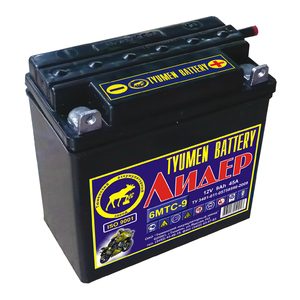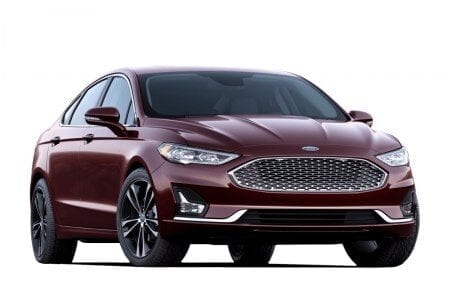
Motorcycle battery
Content
All information about its maintenance
The battery is the electrical organ at the heart of the electrical system and ensures that the motorcycle ignites and starts. Over time, it becomes more and more in demand, especially due to the number of accessories often connected to it: electronic alarms, GPS, phone charger, heated gloves ...
It is also heavily emphasized by urban use, with re-starts associated with often short trips. It is usually recharged by the generator, but this is not always sufficient to provide charging, especially in the case of repeated short trips.
Therefore, it requires regular maintenance to keep it as long as possible, knowing that its lifespan can range from 3 to over 10 years.
The interview is about checking its load as well as terminals and possibly checking its level.
Technique
Constitution
There was once only one type of battery, lead-acid batteries. There are many other types nowadays, with or without maintenance, with gel, AGM or lithium and then solid electrolyte lithium. And after lithium-ion batteries, we're even talking about lithium-air batteries. The advantages of lithium are less footprint and weight (90% less), no maintenance, and no lead and acid.
A lead battery consists of lead-calcium-tin plates bathed in acid (20% sulfuric acid and 80% demineralized water) installed in a special plastic container, usually (sometimes ebonite).
Different batteries differ in electrode cleanliness, separator quality or specific design ... which can lead to large price differences with the same voltage / gain characteristics.
Capacity AH
Capacity, expressed in ampere hours, is a measure of performance. It expresses the maximum current rate that the battery can flow for one hour. A 10 Ah battery can supply 10 A for an hour or 1 A for ten hours.
Download
The battery discharges naturally, even faster in cold weather, and especially when an electrical system is installed on it, such as an alarm. Thus, the battery can lose 30% of its charge in cold weather, which encourages you to park the motorcycle in the garage, where it will be slightly protected from freezing temperatures.
Therefore, it is necessary to monitor its voltage and charge it regularly with a motorcycle charger (and especially not a car charger that is too powerful). Some recent batteries have charge indicators.
Indeed, a battery that is completely discharged (and remains discharged for a long time) can no longer accept to be fully charged afterwards.
Voltage is not the only element to consider as starting requires a minimum voltage. CCA - Cold Crank Ampair - accurately indicates the maximum intensity that can be run from the battery within 30 seconds. This determines the ability to start the engine.
Thus, the battery may well support a voltage of about 12V, but it cannot provide enough current to start the motorcycle. This is what happened to my battery ... 10 years later. The voltage remained at 12V, the headlights turned on the engine correctly, but could not start.
Please note that the so-called 12V lead battery must be charged at 12,6V. It can be charged up to 12,4V. It is considered discharged at 11V (and especially below).
Instead, the lithium battery should display 13V when not in use. The lithium battery is charged using a dedicated charger, not a lead charger. Some chargers are capable of doing both.
Sulfate
The battery is sulfonated when lead sulfate appears as white crystals; sulfate, which can also appear on the terminals. This sulfate, which accumulates on the electrodes, is only removed with certain chargers, which can eliminate some of it by sending electrical impulses that convert this sulfate to acid.
2 types of batteries
Classic battery
These models are easily recognizable by easily removable fillers.
They require regular maintenance, with demineralized water filling, to always be at the correct level. The level is indicated by two lines - low and high - and should be checked regularly; at least once a month.
The only precaution you need to take to refill is to protect your hands to avoid getting acid spray during refilling.
If the level needs to be tweaked too regularly, a complete battery replacement may be considered.
Attention! Never put acid back on pain degrading components. Always use demineralized water only (never tap water).
Maintenance-free battery
These models are not meant to be opened. There are no more liquid (acid) upgrades. However, the load level must be regularly checked and maintained. Just use a voltmeter, especially in winter when cold speeds up the discharge significantly.
Recently, gel batteries have had very good cycling performance and take deep discharges. Thus, gel batteries can be left completely discharged without any problem; while standard batteries do not support full discharge very well. Their only drawback is that they can carry less high charge / discharge currents than standard lead-acid batteries.
Maintenance
First of all, care must be taken to ensure that the battery terminals are not loosened or corroded. A little grease on the terminals will protect them from oxidation very well. The oxidized terminals prevent the passage of current and therefore charge it.
We take the opportunity to verify that the battery is intact, leaking or oxidizing or even swollen.
Charge the battery
If you want to remove the battery from the motorcycle, loosen the negative (black) pod first, then the positive (red) pod to avoid juice bumps. We will rise in the opposite direction, i.e. start with positive (red) and then negative (black).
The risk to continue the opposite is to bring the key into contact with the frame when the positive tip is loosened, which causes an uncontrollable "forensic juice", the key turns red, the battery terminal melts, and there is a risk of severe burns when trying to remove key and the risk of fire from the motorcycle.
You can leave the battery on the motorcycle to charge it while the engine is turned off. You just need to take precautions by putting in a circuit breaker (you know the big red button, usually on the right side of the steering wheel).
Some chargers offer several voltages (6V, 9V, 12V, and sometimes 15V or even 24V), you need to check BEFORE charging the battery accordingly: 12V in general.
One final point: each motorcycle / battery has a standard loading speed: for example 0,9 A x 5 hours with a maximum speed of 4,0 A x 1 hour. It is important to never exceed the maximum download speed.
Finally, the same charger is not used for lead and lithium batteries unless you have a charger that can do both. Likewise, the motorcycle battery is not connected to the car battery, which can damage not only the battery, but the entire electrical system of the motorcycle and, in particular, the latest motorcycles, which are electronically clad and are much more sensitive to voltage surges.
Where to buy and at what price?
Your dealer will be able to provide you with a suitable battery for your motorcycle. There are also many websites on the internet nowadays that sell them, but not necessarily cheaper, especially with shipping costs.
There are many models, ranging in price from simple to fourfold, for the same motorcycle. So we can give an example for the same roadster with a first price of € 25 (MOTOCELL) and then others at € 40 (SAITO), € 80 (DELO) and finally € 110 (VARTA). The price is distinguished by quality, discharge resistance and durability. Therefore, we should not jump on the cheapest model by saying that you are making a good deal.
Some sites offer a charger for any battery purchased. Again, there are big differences between the 2 brands and even more between the 2 chargers. More information on battery chargers.
Check carefully before ordering.
Do not throw away
Never throw a battery into nature. Dealers can collect it back from you and send it to the appropriate processing center.

